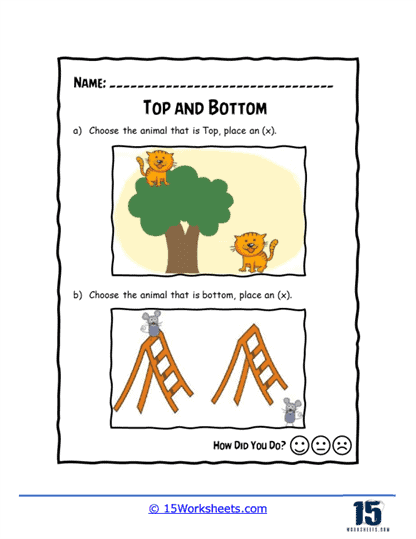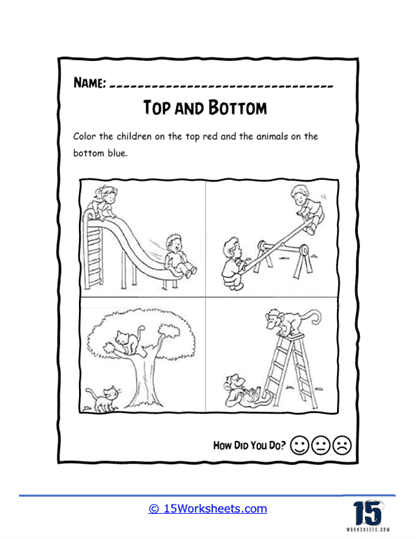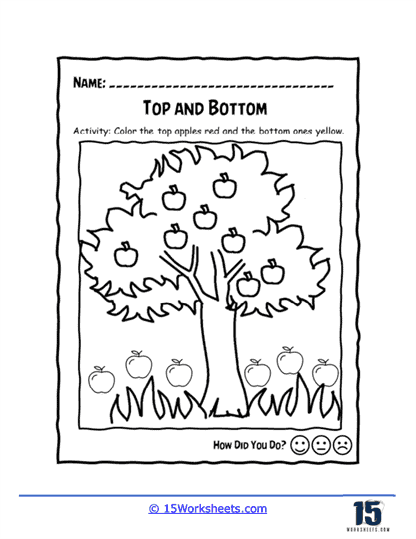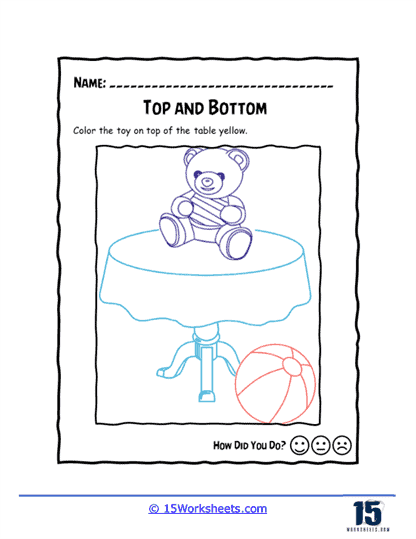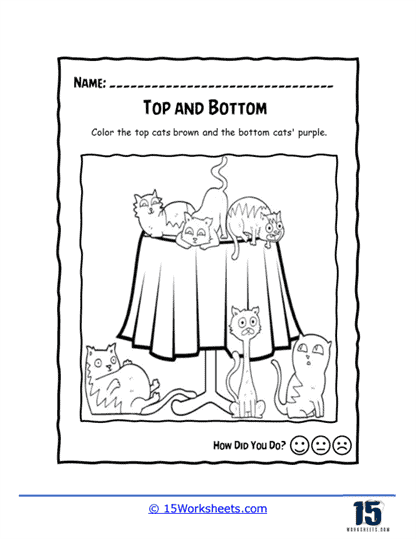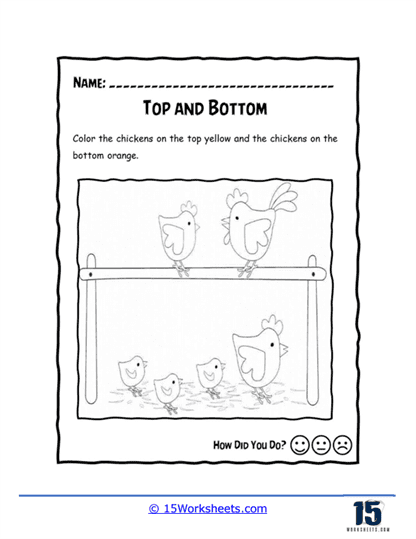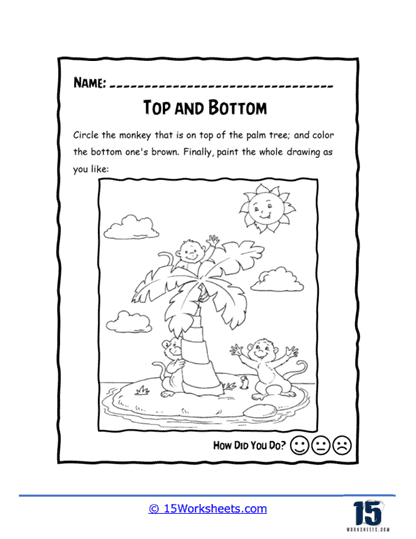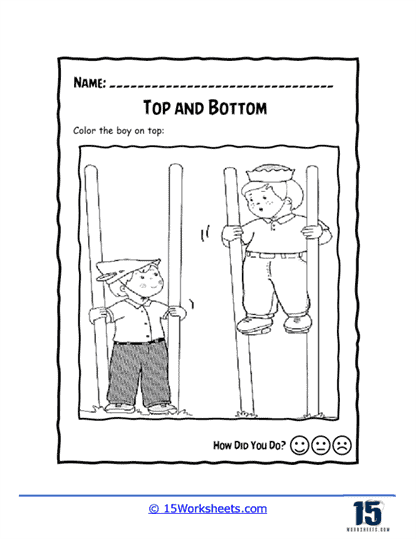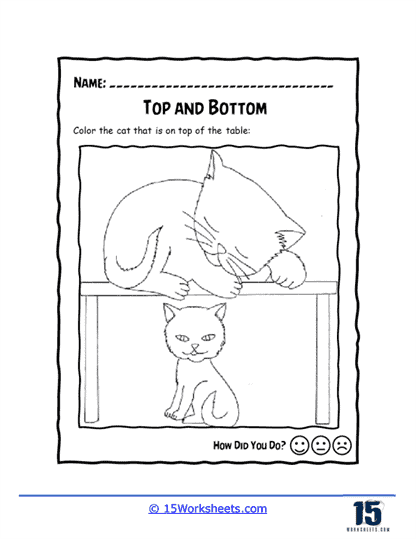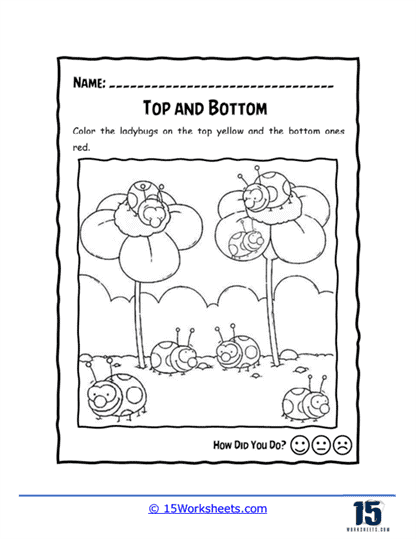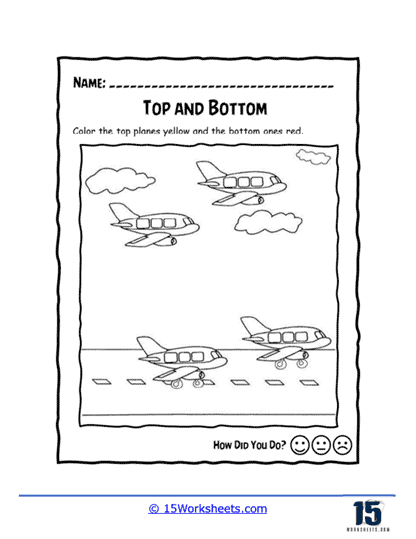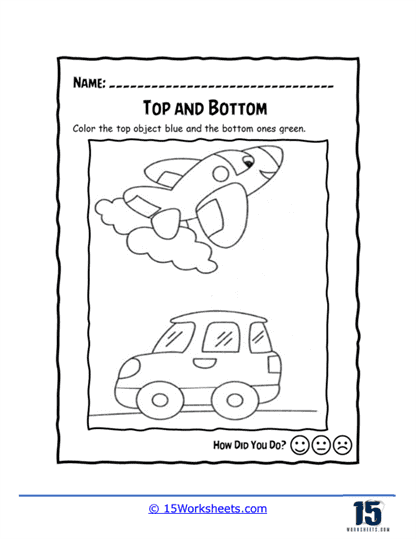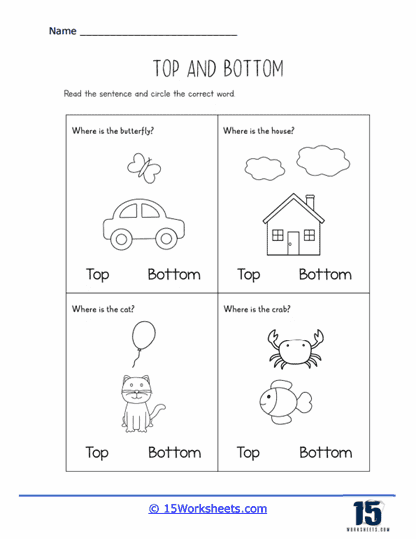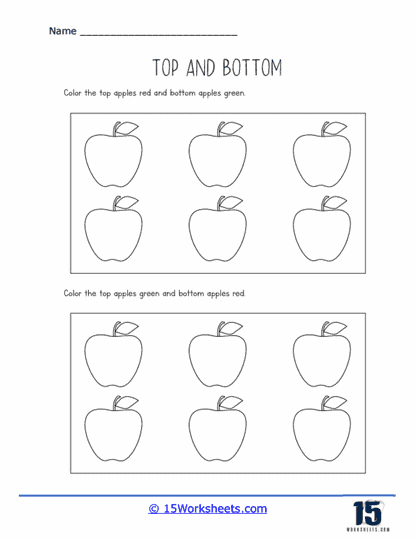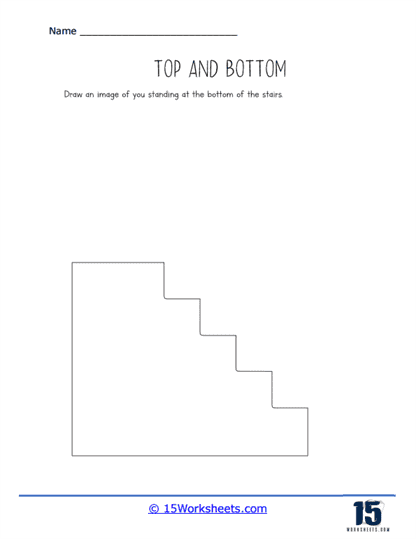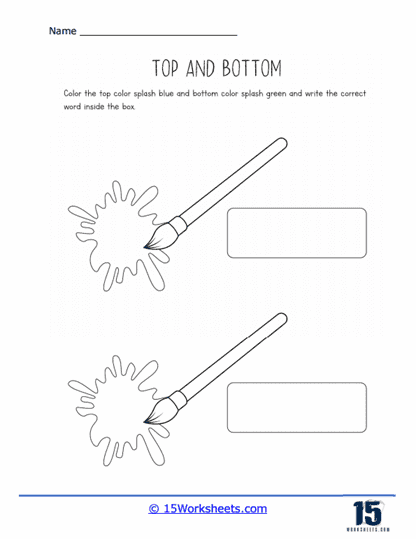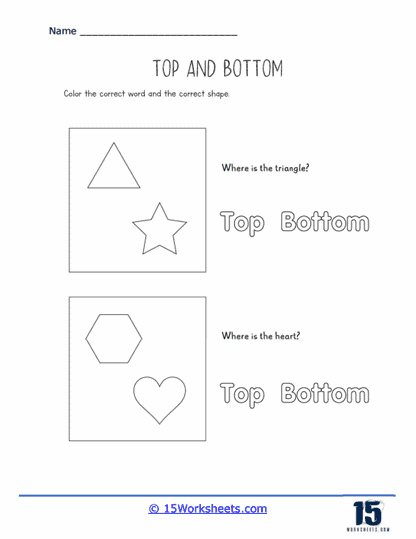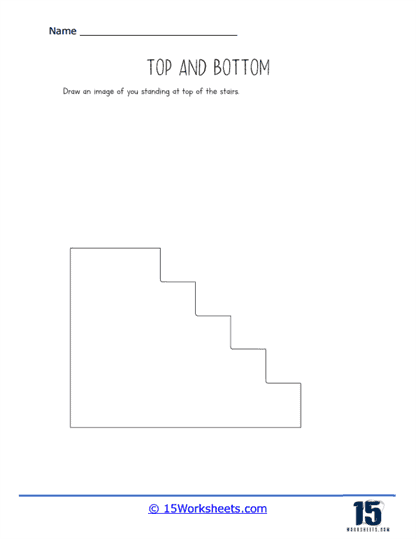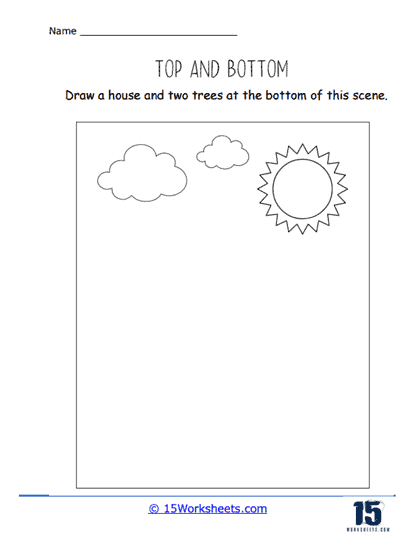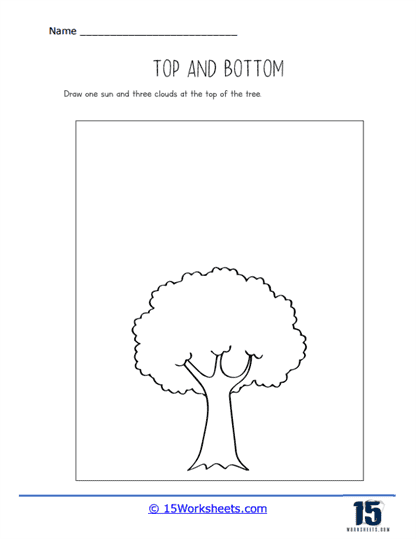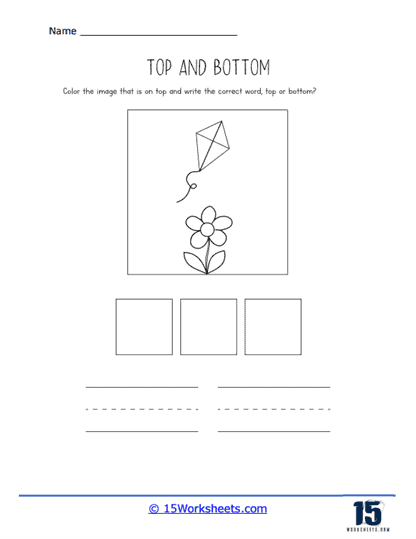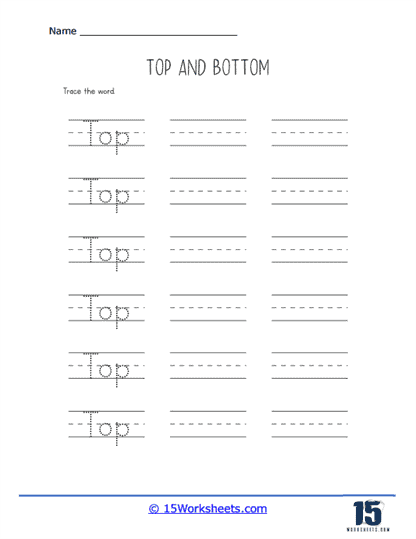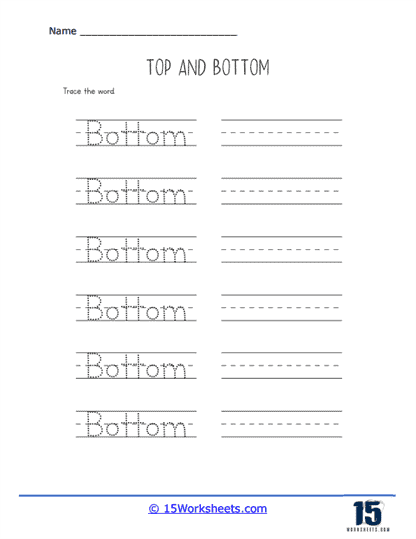Top or Bottom Worksheets
About These 15 Worksheets
This set of worksheets will help children understand spatial relationships, especially as they relate to the position of objects being at the top or the bottom. They’re like the building blocks of understanding the world in terms of space and position.
These words are prepositions, which describe where an object is located relative to another object. If you have a stack of books, for instance, one book might be at the “top” of the stack, while another book might be at the “bottom.”
On these worksheets, you’ll generally find pictures or diagrams where certain items or characters are situated at the top or the bottom. The task for the child would be to identify, label, or circle the objects based on their position.
For example, you might have a worksheet with a picture of a shelf with various objects on it. The child might be asked to color the item at the “top” of the shelf or to circle the object at the “bottom.”
How To Teach This Concept
Teaching the concepts of “top” and “bottom” to children is an important component of their spatial and cognitive development. These concepts assist children in understanding their surroundings, interpreting directions, and expressing their observations. Here is a step-by-step guide on how to effectively instill these fundamental concepts:
1. Demonstration – The first step in teaching these concepts is demonstration. Use tangible objects around you to illustrate these prepositions. For instance, you could stack blocks and point to the “top” block and then the “bottom” block while explaining what you’re doing.
2. Interactive Play – Engage children in play-based learning. You can create simple games where they stack toys, and you ask them to point out the toy at the “top” or at the “bottom”. Children learn effectively when they are actively involved in a fun, hands-on activity.
3. Storytelling – Utilize storytelling as a tool to incorporate these concepts. Use books with illustrations where characters or items are on the “top” or “bottom”. For instance, a story about a monkey climbing to the top of a tree or a fish at the bottom of the sea. As you read, emphasize the terms “top” and “bottom”.
4. Arts and Crafts – Craft activities are a wonderful way to teach these concepts. Encourage the child to draw a sun at the “top” of a page and grass at the “bottom”. This not only enhances their creative skills but also reinforces their understanding of the concepts.
5. Everyday Conversations – Incorporate these terms into your daily conversations. For instance, during meal times, you could point out that the lid is on the “top” of the jar or the plate is at the “bottom” of the stack. Regular use of these terms in context can reinforce their meanings.
6. Worksheets – Our worksheets are a fantastic resource for children to practice these concepts. Worksheets may involve coloring the object at the “top” or circling the object at the “bottom”. This not only helps reinforce the concepts but also aids in the development of fine motor skills.
7. Songs and Rhymes – Kids often remember concepts better when they are put into songs or rhymes. Create a simple song or rhyme that incorporates these terms and sing it with the child. This will help them remember the concepts in a fun and engaging way.
8. Real-Life Applications – Use real-life examples to further reinforce these concepts. For example, when climbing stairs, you could mention that you start at the “bottom” and climb to the “top”.
9. Games – Games such as ‘I Spy’ can be modified to teach these concepts. You can say, “I spy something that is at the top,” and let the child guess what it is. Games make learning fun and interactive, and provide a relaxing environment for children to learn and apply these concepts.
Teaching the concepts of “top” and “bottom” to children is a gradual process that involves repeated exposure and various experiences. Keep in mind that different children may grasp these concepts at different paces, and that’s perfectly fine. The goal is to make the learning process enjoyable and meaningful. Be patient, provide positive reinforcement, and consistently incorporate these concepts into everyday activities. Eventually, these fundamental skills will become second nature to the children, laying a strong foundation for more advanced spatial understanding.

